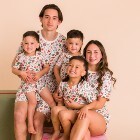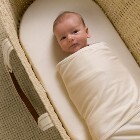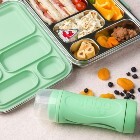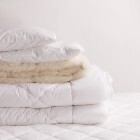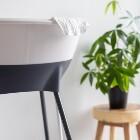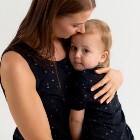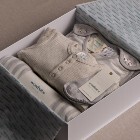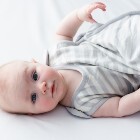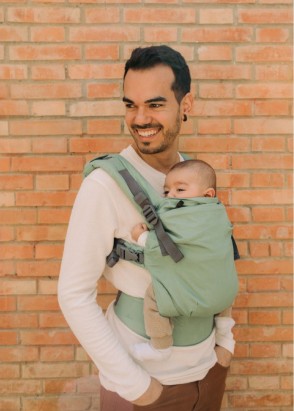Every baby carrier fits differently just as everyone's body shape differs, so there is no hard and fast rule on what will work best. However there are many carrier options out there for plus-size wearers that work well, so don’t let size stop you.
For a larger wearer, there are some features in a carrier that you need to take into consideration when buying to ensure that it will fit.
• How long is the waistband? Will it fit your waist?
• If the waistband is not long enough, can you get an extender?
• Can you wear the shoulder straps H-style? Most carriers do but it pays to check
• How long are the shoulder straps?
• Does it have PFAs?
Do remember that a waistband is designed to sit around your waist and not your hips, so this measurement is usually a but smaller. Some carriers have the option of purchasing a waistband extender, so keep this in mind if needed.
A carrier with shoulder straps that can only be worn in the X-style can limit the length that you can get the straps. This style is ideal for those with smaller frames as you can get the straps tighter, whereas the straps worn H-style on your back can be extended further to fit larger sizes.
Most buckle carriers have similar-length shoulder straps. Having PFA's on your carrier can allow you to have a wee bit more length. Meh Dai carriers have different length straps depending on the brand. These are still much longer than the straps on buckle carriers.
Here are some popular carrier options for plus-sized wearers:
1. The Beco Gemini and Beco 8 - these are our most popular carriers for larger wearers. Their simple long shoulder strap design coupled with the ability to purchase a waistband extender means that they are often the go-to option.
2. Meh Dai carriers - they have long waistbands and shoulder straps that you tie, so you are not restricted by buckles. The straps are usually generous and you can tie the shoulder straps in different ways to get the right fit.
3. Ring slings - these are a one-shoulder carrier with nothing around your waist. They usually have a generous amount of fabric to fit all sizes.
4. Woven wrap - there is a variety of sizes available. For larger wearers, a size 6 or 7 would be most appropriate as they would have some length left to be able to try a few different carriers.


